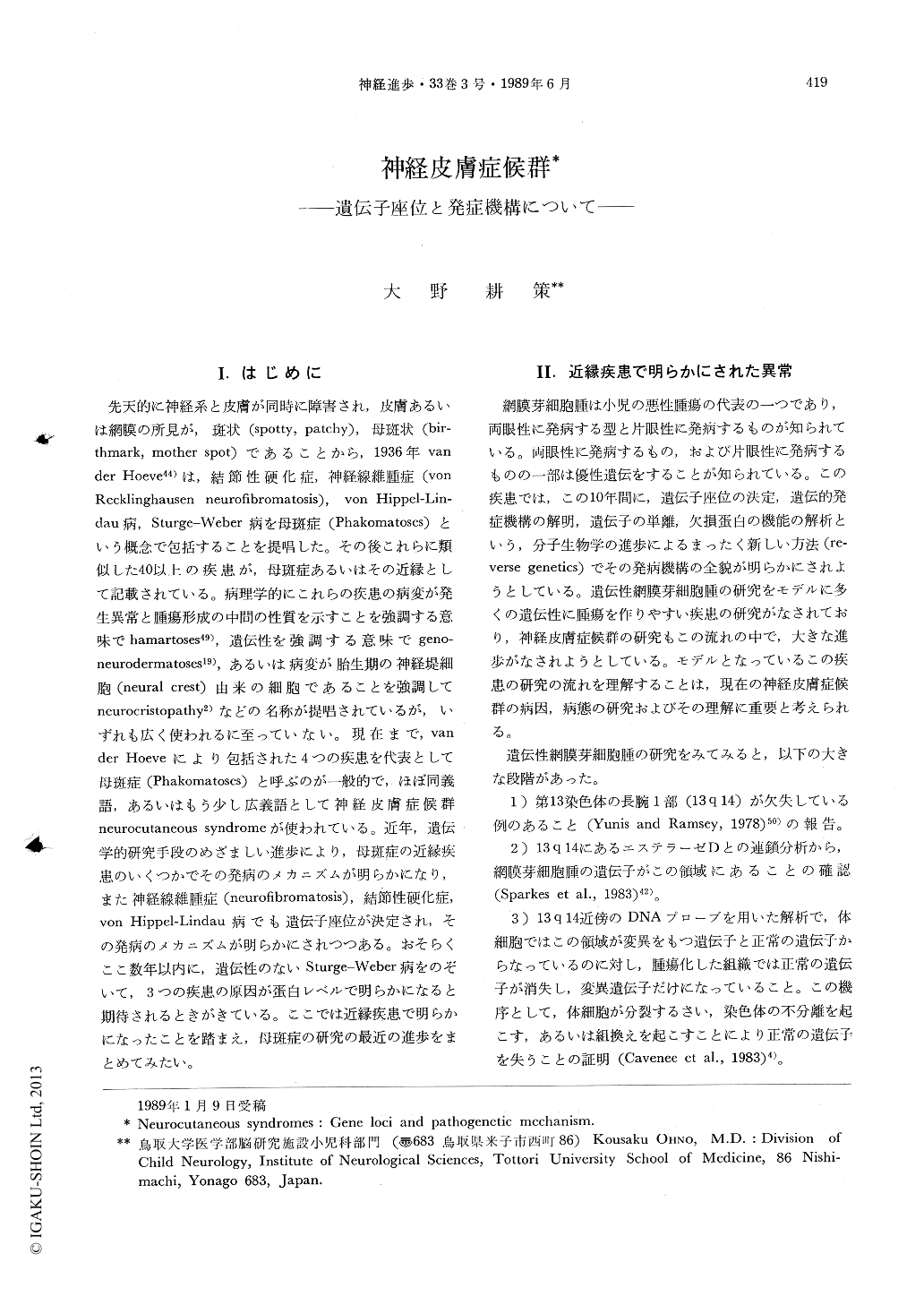Japanese
English
- 有料閲覧
- Abstract 文献概要
- 1ページ目 Look Inside
I.はじめに
先天的に神経系と皮膚が同時に障害され,皮膚あるいは網膜の所見が,斑状(spotty,patchy),母斑状(birthmark,mother spot)であることから,1936年vander Hoeve44)は,結節性硬化症,神経線維腫症(vonRecklinghausen neurofibromatosis),von Hippel-Lindau病,Sturge-Weber病を母斑症(Phakomatoses)という概念で包括することを提唱した。その後これらに類似した40以上の疾患が,母斑症あるいはその近縁として記載されている。病理学的にこれらの疾患の病変が発生異常と腫瘍形成の中間の性質を示すことを強調する意味でhamartoses49),遺伝性を強調する意味でgeno-neurodermatoses19),あるいは病変が胎生期の神経堤細胞(neural crest)由来の細胞であることを強調してneurocristopathy2)などの名称が提唱されているが,いずれも広く使われるに至っていない。現在まで,vander Hoeveにより包括された4つの疾患を代表として母斑症(Phakomatoses)と呼ぶのが一般的で,ほぼ同義語,あるいはもう少し広義語として神経皮膚症候群neurocutaneous syndromeが使われている。
Von Recklinghausen's neurofibromatosis, tuberous sclerosis, and von Hippel-Lindau disease have been grouped as neurocutaneous syndromes or phacomatoses. The neurocutaneous syndromes are congenital conditions of dominant inheritance with variable and widespread manifestations. Their most marked feature is the appearance of multiple tumours in various organs of the body (central nervous system, eye, heart, kidney and skin). Recent molecular genetic approaches (reverse genetics), on human hereditary cancer syndromes such as retinoblastoma, Wilms tumour and Beckwith-Wiedemann syndrome become a good model for the research of the neurocutaneous syndromes. This paper reviews recent remarkable progresses in genetic researches of the neurocutaneous syndromes.

Copyright © 1989, Igaku-Shoin Ltd. All rights reserved.


